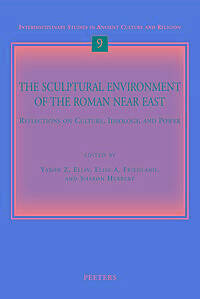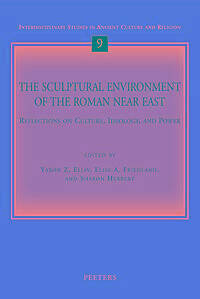
- Afhalen na 1 uur in een winkel met voorraad
- Gratis thuislevering in België vanaf € 30
- Ruim aanbod met 7 miljoen producten
- Afhalen na 1 uur in een winkel met voorraad
- Gratis thuislevering in België vanaf € 30
- Ruim aanbod met 7 miljoen producten
Zoeken
The Sculptural Environment of the Roman Near East
Reflections on Culture, Ideology, and Power
Y.Z. Eliav, E.A. Friedland
€ 85,00
+ 170 punten
Omschrijving
Public sculptures were the "mass media" of the Roman world. They populated urban centers throughout the empire, serving as a "plastic language" that communicated political, religious, and social messages. This book brings together twenty-eight experts who otherwise rarely convene: text-based scholars of the Greco-Roman, Jewish, and Christian realms from the fields of classics, history, and religion and specialists in the artistic traditions of Greece and Rome as well as art historians and archaeologists. Utilizing the full spectrum of ancient sources, the book examines the multiple, at times even contradictory, meanings and functions that statues served within the complex world of the Roman Near East. Moreover, it situates the discussion of sculpture in the broader context of antiquity in order to reevaluate long-held scholarly consensuses on such ideas as the essence of Hellenism (the culture that emerged from the encounter of Greco-Romans with the Near East) and the everlasting "conflict" among paganism, Christianity, and Judaism.
Specificaties
Betrokkenen
- Auteur(s):
- Uitgeverij:
Inhoud
- Aantal bladzijden:
- 769
- Taal:
- Engels
- Reeks:
- Reeksnummer:
- nr. 9
Eigenschappen
- Productcode (EAN):
- 9789042920040
- Verschijningsdatum:
- 29/07/2008
- Uitvoering:
- Paperback
- Formaat:
- Trade paperback (VS)
- Afmetingen:
- 163 mm x 236 mm
- Gewicht:
- 1224 g

Alleen bij Standaard Boekhandel
+ 170 punten op je klantenkaart van Standaard Boekhandel
Beoordelingen
We publiceren alleen reviews die voldoen aan de voorwaarden voor reviews. Bekijk onze voorwaarden voor reviews.











